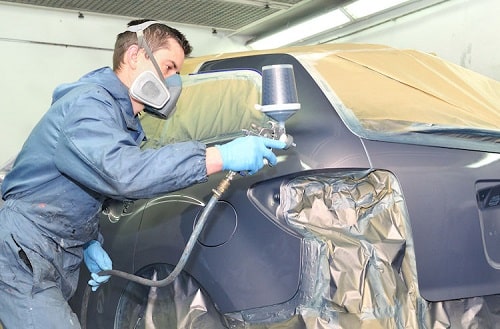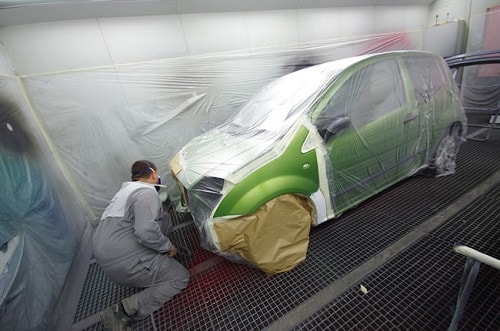 Applying a matt base coat to refinish on cars
Applying a matt base coat to refinish on cars
This article is intended for those who are planning to paint a bodywork or fairing and who have questions about the correct way to apply the two-coat 1K base matt paint to be varnished in a solvent-based version.
As we explained it in another article, the two-layer painting designates a mode of painting, not in 2 layers, but in 2 stages, which are the painting then the varnish. In the same way that there are so-called three-layer paints, which are a little more complex.
In general, 1C solvent-based paint is always a pleasure to apply and it is simply the easiest product to apply, thanks to its finesse, its fluidity, and its ultra-fast drying. Any risk of drips is ruled out. Let's say that to paint a basecoat correctly, you just have to apply "veils", which are thin layers.
How do you apply a two-coat paint on your car ?
We separate the opaque and standard shades (like red, simple black, etc.) from the metallic or pearly shades. The first are painted with a few fine veils (3, 4...) until the background (the primer) is covered.
As for shades based on metallic pigments or mother-of-pearl, they are painted with thin veils (always!), but in the latter case we say that we paint "2.5 coats". It is a question of making a "veil of placement" at the end of the application: this consists of spraying a very light veil, at a greater distance, between 35 and 45 cm from the support. The goal is to fade the two-layer paint, to homogenize and to remove the marbling defects, due to a bad placement of the pigments. The solvent-based two-coat paint is applied with successive coats without waiting very long, because at 20°C, the product forms a very thin dry film in less than 60 seconds!
 Why is it important to make thin layers ?
Why is it important to make thin layers ?
It is essential to make veils thin, especially with metallic paints, pearlescent paints, chameleons, or even car color codes. For the simple reason that this allows better positioning of the pigments: these, if observed under a microscope, have a flat appearance, like cornflakes or flakes. So, when thick coats are applied, these particles go all over the place, instead of lying “flat”. So, it is better to do more thin coats, than 1 or 2 thick coats !
What is the difference in application between a solvent-based and hydro bi-coat ?
Today, refinishers only use hydro basecoats, i.e. water-based. The environmental benefits, thanks to a significantly reduced VOC release, are certain. On the side of the applicator, it's much more complicated, compared to the superb solvent-based matte bases of the time.
It is mainly the very slow evaporation time (of the water compared to the solvent) that we note, but also the thickness and the drying time through : a hydro base is thicker and remains soft for longer, which makes it difficult to work with, sanding for example.



















































































